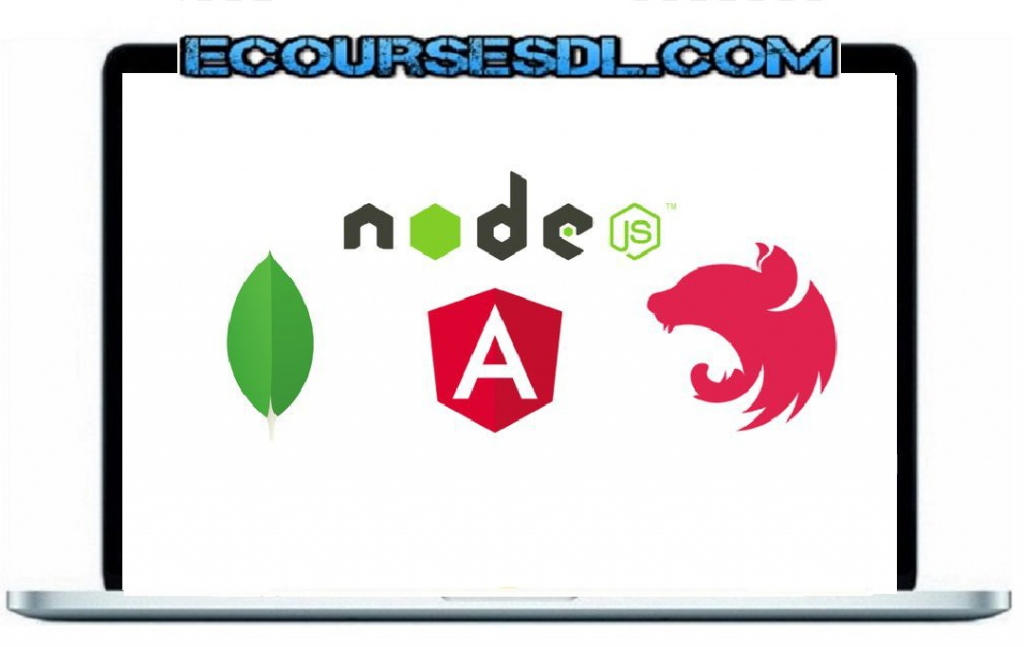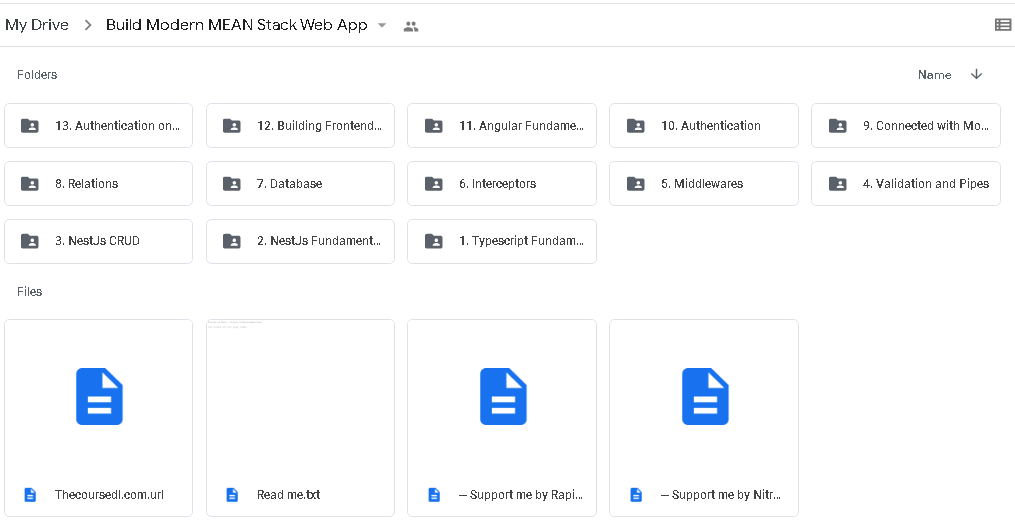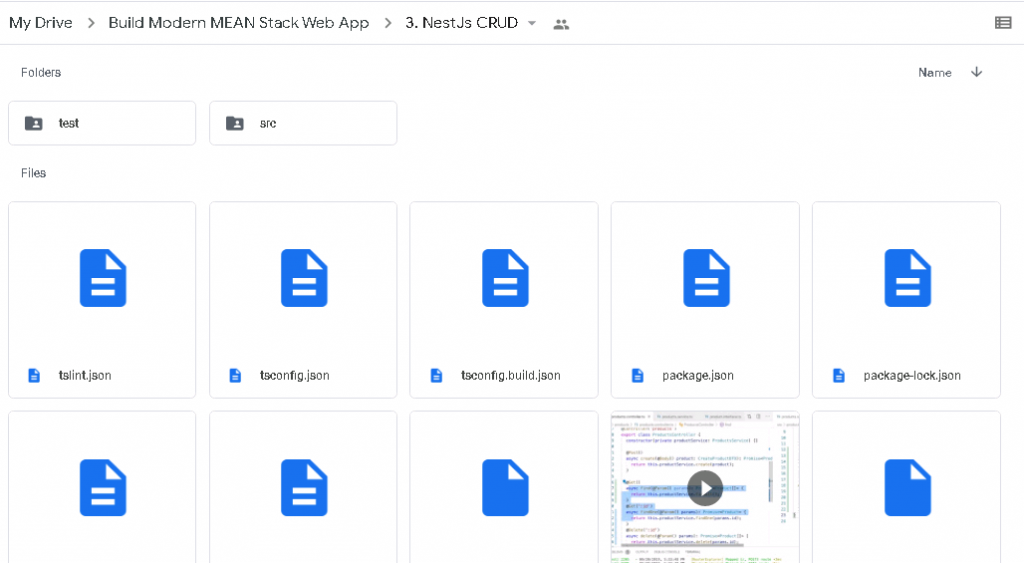
Build Modern MEAN Stack Web App
Original Price: $11,99
DOWNLOAD: FREE FOR MEMBERSHIP (CLICK HERE)
Author: N/A
Sale Page :_https://www.udemy.com/course/nestjs-angular/
Contact me for the proof and payment detail: email_Ebusinesstores@gmail.com Or Skype_Macbus87
PROOF COURSE:



Modern MEAN Stack web Application development with Node.js, Angular, Nestjs, MongoDB
What you’ll learn:
NestJs Fundamentals
Typescript Fundamentals
Angular Fundamentals
Build RESTFUL APIs with NestJs and MongoDB
Build RestFUL APIs with NestJs and Mysql
Authentication and Authorization using PassportJs
Add Documentation for your APIS
Build Single Page frontend app with Angular
CRUD Application with Angular
Authentication in Angular Application
Requirements
Having a basic understanding of JavaScript and/or NodeJS
Having basic knowledge of TypeScript is recommended, but not required
Description
The term MEAN stack refers to a collection of JavaScript based technologies used to develop web applications. MEAN is an acronym for MongoDB, ExpressJS, Angular and Node.js. From client to server to database, MEAN is full stack JavaScript.
The main reason for choosing the MEAN stack over others is because of the use of a common language for both client-side and server-side. Since, all these technologies are written in JavaScript, your web development process becomes neat. Node.js is a platform that brought JavaScript implementation on the server-side. With Angular using JavaScript on the front-end, it becomes easier to reuse code from back-end to front-end.
MEAN stack offers a modern approach to web development. It also makes use of the power of modern SPAs (single-page applications), which does not require entirely refreshing a web page for every server request like most traditional web applications do. Today there is a trend to develop multiple frameworks that correspond to a single programming language and form a full-stack solution. But, as of now, using MEAN stack is a very effective approach to web development.
In this course, we are going to build our backend application Nest.js. Nest.js is a Node.js framework. It is built on the top of Express and Typescript.
Nest.js is a progressive Node.js framework for building efficient, reliable and scalable server-side applications. NestJS is a server-side (backend) application framework beautifully crafted to support developers productivity and make their lives happier. Well, it’s not only a framework, it’s an enabler of entering the world of advanced engineering concepts such as Domain Driven Design, Event Sourcing, Microservices architecture.
I spent a good few years in my career developing large scale apps and it didn’t let me down any single time. It’s well written, having quality as an objective, modular web framework with a good documentation, delivering nice developer experience. Exactly the same way I’d describe Nest.
NestJs is built on the top of Typescript and Express.js. It also combines some elements of Object Oriented Programming and functional programming.
Here comes NestJS, a framework which is fully written in TypeScript (it supports JS too, but types are good), it’s easily testable and brings in all the necessary stuff you always think about but you don’t know what to choose.
Why NestJs?
NestJS doesn’t try to limit you to a particular way of doing things, it just provides the tooling you need. It doesn’t try to reinvent the wheel, it utilize existing tools you already know. For e x a mple, it uses express behind the scenes which makes your app compatible with the majority of express middlewares.
Here are some good reasons why NestJS shines:
Dependency Injection – NestJS provides DI straight out of the box, increasing efficiency, modularity and testability of applications.
Modularisation – NestJS provides a modular structure for organizing code within the same domain boundary into separate modules.
Flexibility – NestJS provides structure, which helps large teams build complex applications and yet comes in as lightweight as possible, so how you want to build is your choice.
Familiar APIs you already know – NestJS is heavily inspired by Angular, it is also quite similar to much established frameworks like Spring and .NET. This provides a shorter learning curve and lower entry threshold for developers.
Community – NestJS is the fastest rising framework, already with 14K stars surpassing HapiJS. Also, with NestJS leveraging on the Angular way of doing things, things can only get better for the community.
In this course, I will teach you the foundations/fundamentals of NestJs. I will teach you how to build RESTFUL APIs step by step. You will also learn how to plan, design and deploy APIs. I have also another separate section of GraphQL.
What you are going to learn in this course?
Typescript Fundamentals
NestJs Fundamentals
Angular Fundamentals
Build RESTFUL APIs with NestJs
Connect REST APIs with Angular
Build Frontend with Angular
Authentication on Angular
Authentication on Backend Application
Who this course is for
Intermediate JavaScript developers who want to dive into back-end development
Any developer wants to learn how to build backend server side applications with Typescript
Developers who want to learn how build Restful apis with NestJs, MongoDB and MySQL
Developers who want to learn how to secure your APIs using JWT
Developers who want to learn how to deploy NestJs application
Developers who want to learn how to learn how to build MEAN Stack App with Nestjs and Angular
Developers who want to learn how to consume RESTFUL APIs with Angular
| Level | Price | |
|---|---|---|
| MONTHLY PLAN |
$59.95 per Month. Membership expires after 30 Days. |
Select |
| 6 MONTH PLAN |
$129.95 every 6 Months. Membership expires after 180 Days. |
Select |
| LIFTIME MEMBERSHIP |
$199.95 every 12 Months. Membership expires after 365 Days. |
Select |


